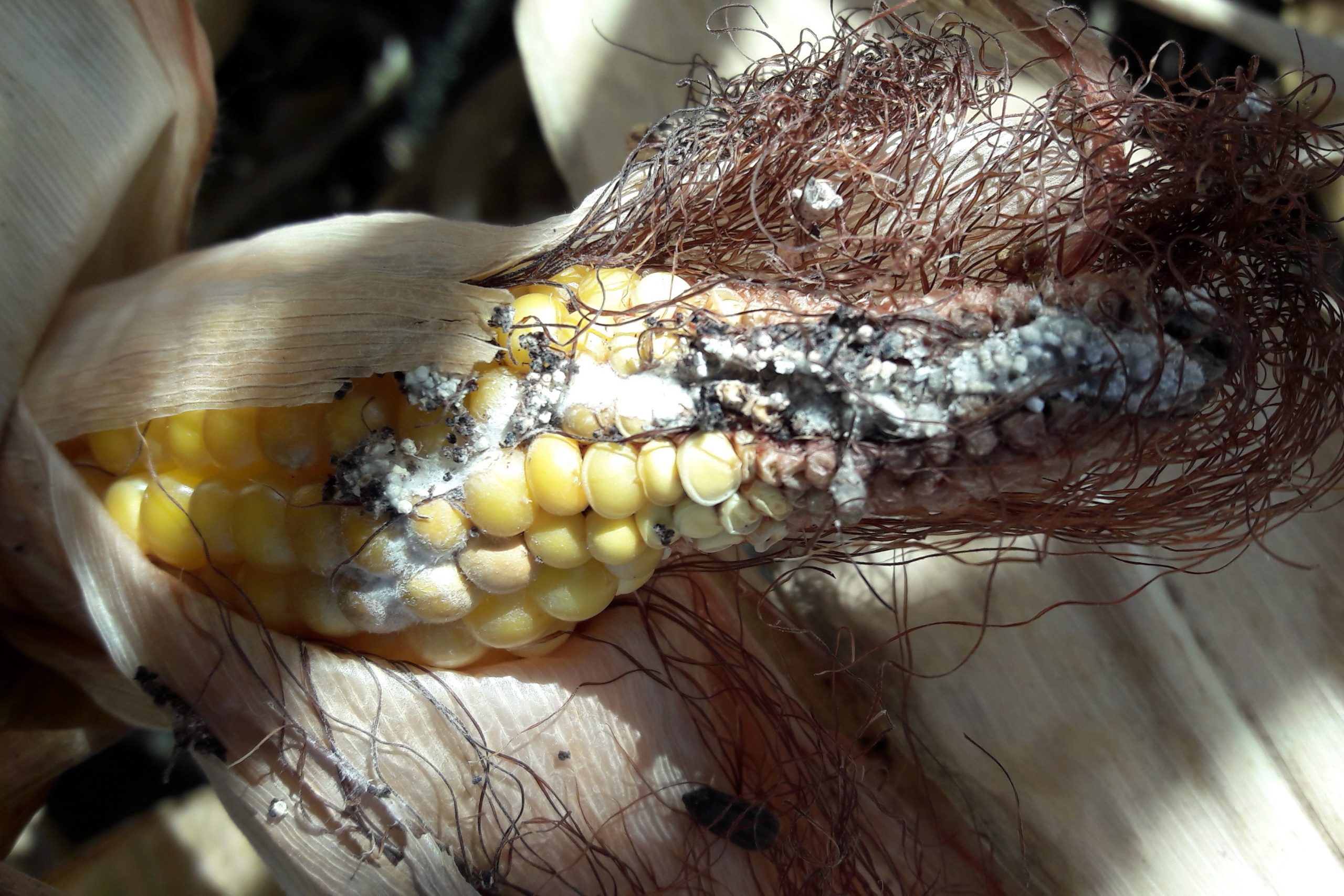Mycotoxins and their gastrointestinal toxicity

The capability of an animal to digest food is of vital importance for its ongoing growth performance. Therefore, a study set out determine the effects of mycotoxins on the utilisation of dietary nutrients in broilers.
Intestinal cells are the first cells to be exposed to mycotoxins at higher concentrations than other tissues. In addition, several mycotoxins, for example trichothecenes and ochratoxins, specifically target high protein turnover and activated cells in the gut epithelium. As a result, intestinal investigations have attracted significant interest over the last decade. Some publications have demonstrated that mycotoxins are able to compromise several key functions of the gastrointestinal tract. These include impaired nutrient absorption, decreased surface area available for nutrient absorption, modulation of nutrient transporters and loss of barrier function.
Trichothecenes can cause harmful injury to the mucosa, destroying cells on the tips of villi and radiomimetic injury to rapidly dividing crypt epithelium. It is well documented that among the trichothecenes, high levels of dietary deoxynivalenol (DON) can induce apoptosis (programmed cell death) of some differentiated epithelial cells. However, it was proven that DON effects are due to a specific modulation of the activity of intestinal transporters rather than a consequence of non-specific cell damage. Other trichothecene mycotoxins such as fusarenon-X and T2-toxin have also been shown to inhibit nutrient absorption in animals. Similar conclusions could be drawn from the study of ochratoxin A, another mycotoxin that inhibits protein synthesis.
Experimental broiler study set-up
One of the aims of a Nutriad study on broilers was to understand the impact of a mixture of mycotoxins on the utilisation of dietary nutrients. A completely randomised experimental design with three mycotoxin types (ochratoxin A, T2-toxin and fumonisin B1) was used. A total of 80, day-old male (Cobb-Avian-48) broiler chickens were allocated into two groups with four replicates of 10 birds in each group. The birds were fed dry feed ad libitum. All birds received a ‘blank’ diet without mycotoxins until five days of age. Experimental diets were then given, starting at day six. The experimental period was five weeks (35 days). The groups were fed as follows:
- Group 1: Control, fed on feed containing mycotoxins below detection limits.
- Group 2: Fed on feed contaminated with Fusarium mycotoxins; 410 ppb Т-2 toxin, 160 ppb ochratoxin A and 12.7 ppm fumonisins supplied as fungal biomass based on maize containing toxic strains of four cultures of fungi (Aspergillus flavus, Fusarium sporotrichiella, F. poae and F. moniliforme) and their exotoxins.
At the end of the experimental period, three birds from each group were placed in individual metabolic cages and acclimatised for five days. Faeces were then collected for three days. During the experimental period, feed intake, body weight and mortality were measured. Based on these parameters, the feed conversion ratio (FCR) was calculated. The ability to digest dry matter, crude protein, crude fat, crude fibre and crude ash was also observed.
Results and discussion
In the second group, mycotoxins significantly impaired all performance parameters studied (Table 1). The feed utilisation was severely affected by mycotoxins (2.09 versus 1.67 in the control group). Table 2 shows how much the digestibility of main nutrients was affected by mycotoxins. Utilisation of all nutrients studied was significantly affected by the mycotoxin contamination. Utilisation of the dry matter and energy of the diet was reduced by 14.1 and 9.7%, respectively.
Therefore, significantly more nutrients passed through the small intestine and caeca undigested and were excreted as such. Among the measurable parameters, the digestibility of crude fibre was the most affected (-36.1%), followed by crude protein (-8.2%) and crude fat (-5.6%).
Adverse effects of mycotoxins can be reversed by application of mycotoxin deactivators into feed of animals. These products work strictly in vivo and will not counteract or mask mycotoxins in stored feed or raw ingredients. It is highly recommended to apply an effective mycotoxin deactivator which offers an opportunity to significantly improve animal health, performance, productivity and profit impaired by mycotoxins. Depending on the target performance different mycotoxins can be more or less problematic. Therefore, using different products for different animal groups has become a trend.
References available on request











